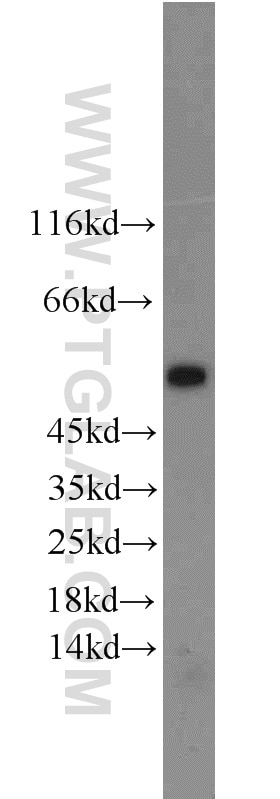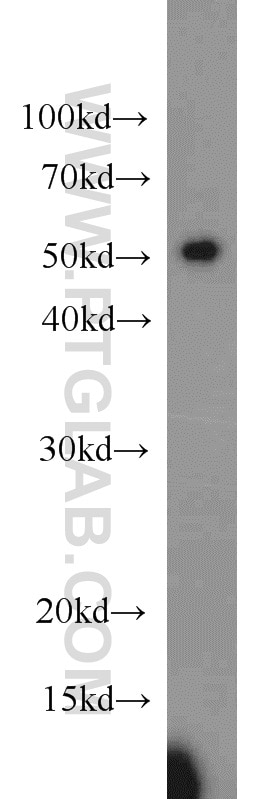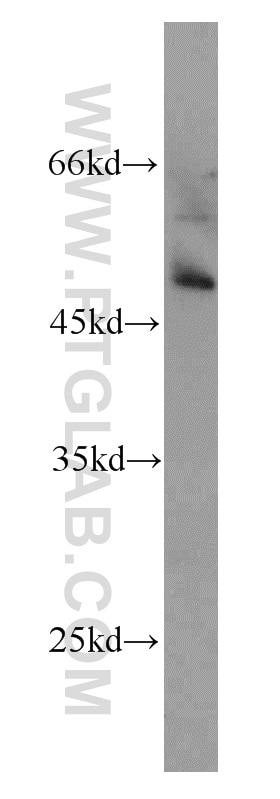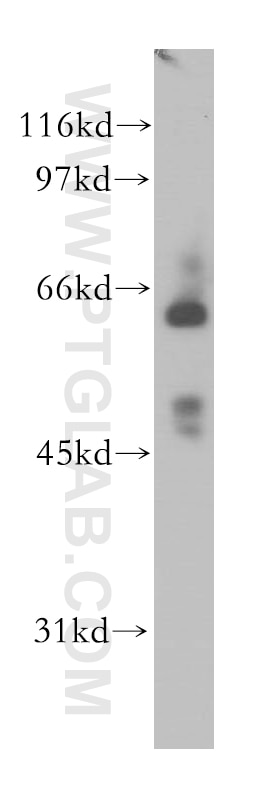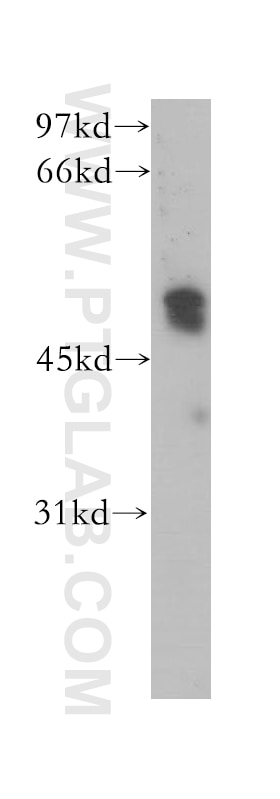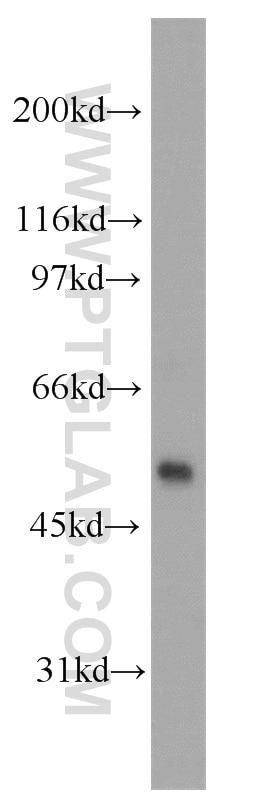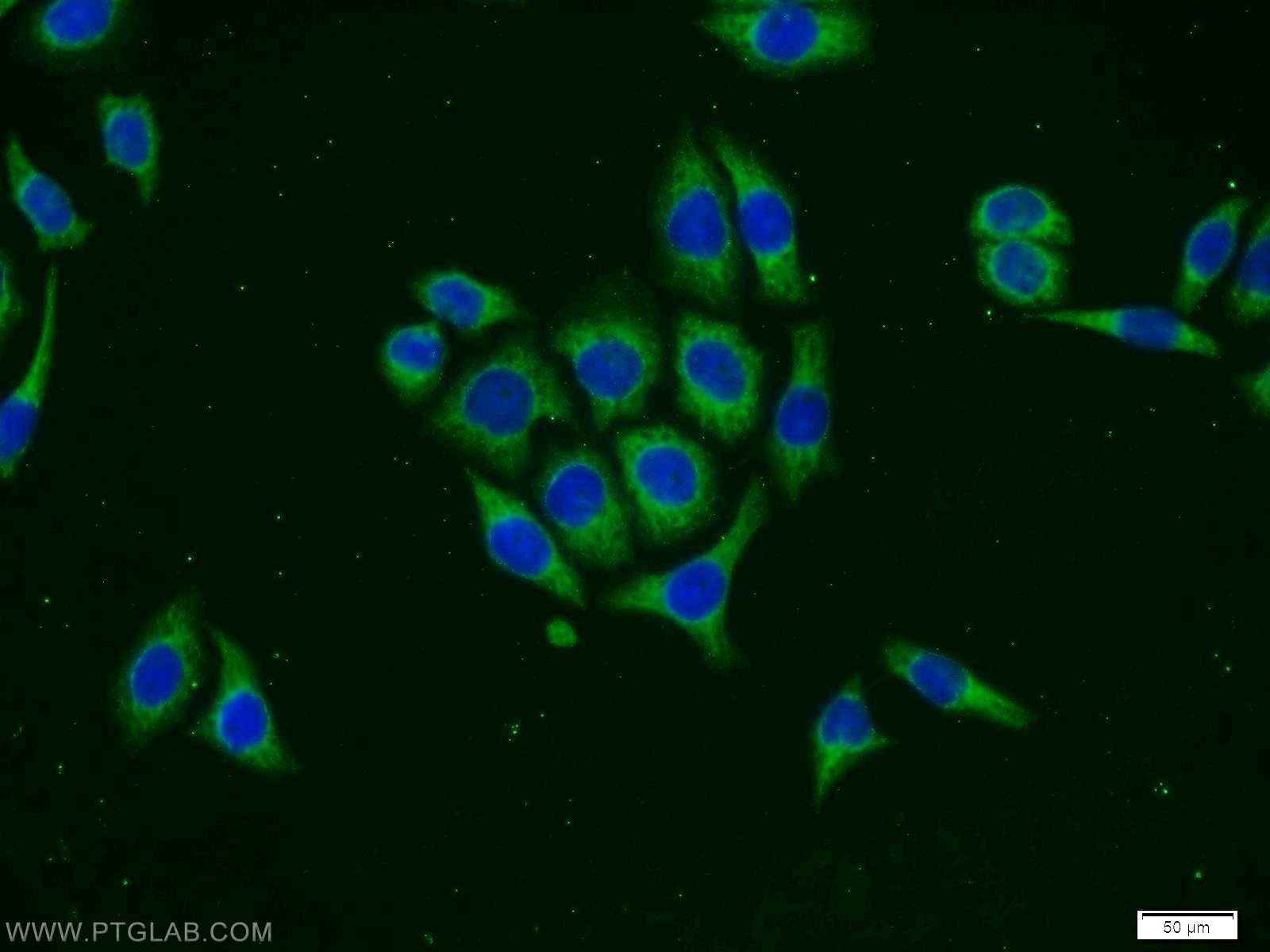Anticorps Polyclonal de lapin anti-PHD1
PHD1 Polyclonal Antibody for WB, IF, ELISA
Hôte / Isotype
Lapin / IgG
Réactivité testée
Humain, souris et plus (1)
Applications
WB, IF/ICC, ELISA
Conjugaison
Non conjugué
N° de cat : 12984-1-AP
Synonymes
Galerie de données de validation
Applications testées
| Résultats positifs en WB | tissu testiculaire de souris, cellules HEK-293, cellules HeLa, cellules PC-3, tissu cardiaque de souris, tissu splénique humain |
| Résultats positifs en IF/ICC | cellules PC-3 |
Dilution recommandée
| Application | Dilution |
|---|---|
| Western Blot (WB) | WB : 1:500-1:1000 |
| Immunofluorescence (IF)/ICC | IF/ICC : 1:10-1:100 |
| It is recommended that this reagent should be titrated in each testing system to obtain optimal results. | |
| Sample-dependent, check data in validation data gallery | |
Applications publiées
| WB | See 6 publications below |
| IF | See 2 publications below |
Informations sur le produit
12984-1-AP cible PHD1 dans les applications de WB, IF/ICC, ELISA et montre une réactivité avec des échantillons Humain, souris
| Réactivité | Humain, souris |
| Réactivité citée | rat, Humain, souris |
| Hôte / Isotype | Lapin / IgG |
| Clonalité | Polyclonal |
| Type | Anticorps |
| Immunogène | PHD1 Protéine recombinante Ag3616 |
| Nom complet | egl nine homolog 2 (C. elegans) |
| Masse moléculaire calculée | 407 aa, 44 kDa |
| Poids moléculaire observé | 48 kDa |
| Numéro d’acquisition GenBank | BC036051 |
| Symbole du gène | PHD1 |
| Identification du gène (NCBI) | 112398 |
| Conjugaison | Non conjugué |
| Forme | Liquide |
| Méthode de purification | Purification par affinité contre l'antigène |
| Tampon de stockage | PBS avec azoture de sodium à 0,02 % et glycérol à 50 % pH 7,3 |
| Conditions de stockage | Stocker à -20°C. Stable pendant un an après l'expédition. L'aliquotage n'est pas nécessaire pour le stockage à -20oC Les 20ul contiennent 0,1% de BSA. |
Informations générales
EGLN2, also named as PHD1, EIT6 and HPH-3, catalyzes the post-translational formation of 4-hydroxyproline in hypoxia-inducible factor (HIF) alpha proteins. It hydroxylates HIF-1 alpha at 'Pro-402' and 'Pro-564', and HIF-2 alpha. EGLN2 functions as a cellular oxygen sensor and, under normoxic conditions, targets HIF through the hydroxylation for proteasomal degradation via the von Hippel-Lindau ubiquitination complex. It may play a role in cell growth regulation.
Protocole
| Product Specific Protocols | |
|---|---|
| WB protocol for PHD1 antibody 12984-1-AP | Download protocol |
| IF protocol for PHD1 antibody 12984-1-AP | Download protocol |
| Standard Protocols | |
|---|---|
| Click here to view our Standard Protocols |
Publications
| Species | Application | Title |
|---|---|---|
Cell Res Hypoxia induces mitochondrial protein lactylation to limit oxidative phosphorylation | ||
Respir Res Short isoform thymic stromal lymphopoietin reduces inflammation and aerobic glycolysis of asthmatic airway epithelium by antagonizing long isoform thymic stromal lymphopoietin. | ||
J Cell Mol Med LncRNA MIAT enhances cerebral ischaemia/reperfusion injury in rat model via interacting with EGLN2 and reduces its ubiquitin-mediated degradation. | ||
Asian J Androl CHD1 deletion stabilizes HIF1α to promote angiogenesis and glycolysis in prostate cancer | ||
Leuk Lymphoma Localization of collagen modifying enzymes on fibroblastic reticular cells and follicular dendritic cells in non-neoplastic and neoplastic lymphoid tissues. | ||
Cell Death Dis Cancer associated fibroblast-derived CCL5 promotes hepatocellular carcinoma metastasis through activating HIF1α/ZEB1 axis. |
